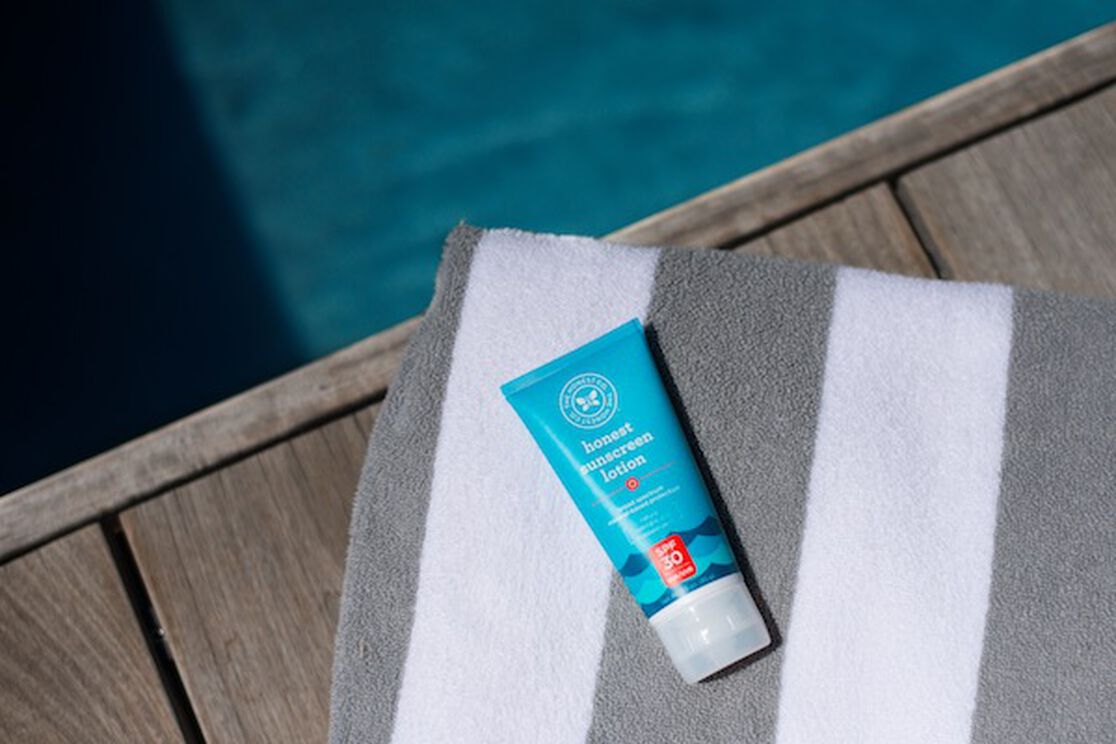Memorial Day signals the start of summer. And while sunscreen is a year-round staple, we should take extra care in using it during this sunny season. But before you stock up and slather it on, our co-founder Christopher Gavigan is here to share his recent interview with StrollerTraffic so we can make sense of the new sunscreen labeling requirements.
Can you get us up to speed on the new requirements?
Starting last year, the U.S. Food and Drug Administration (FDA) began requiring much more clarity and transparency on sunscreen labels. In a nutshell, any product in this category (everything from traditional sunscreens to lip balms and cosmetics with sunscreen) must now include the following information on the label:
- Exactly what's inside. Labels must show the actual percentage of active ingredients.
- Degree of protection. Old labels showed just an SPF number, which only reflects UVB protection—against the type of ultraviolet rays that cause sunburn. New labels can say “broad spectrum protection,” which means the sunscreen has been scientifically proven to protect against both UVB and UVA (the rays that penetrate deeper and cause cancer). Still, it’s important to note that UVA rays are further broken down into two types: UVA1 and UVA2. While the FDA has approved seventeen types of sunscreens, zinc oxide is the only one proven to protect against all three wavelengths: UVB, UVA1, and UVA2.
- Warnings. All products must include a statement about the danger of sun exposure and offer protection tips. Additionally, any product with an SPF lower than 15 must have a warning that it doesn’t protect against skin cancer and it also can’t be labeled broad spectrum.
- No more use of the terms “sunblock,” “sweat-proof,” or “water-proof.” Why? There’s no product that truly blocks the sun and all of them eventually wash off.
- Water resistance time limits. Products labeled “water-resistant” must state how long the SPF protection lasts based on standardized testing (either up to 40 or 80 minutes).
What types of dangers in skincare products can slip through unannounced, even with the new labeling requirements?
The FDA still allows the sale of sunscreens that only offer UVB protection. Manufacturers can’t claim they’re “broad spectrum,” but they can still sell them. It doesn’t make sense and it isn’t allowed in places like Europe and Canada, where all sunscreens must be broad spectrum. Also, with regard to SPF, larger numbers mislead people into believing they’re more protected when in fact SPF 15 screens up to 95 percent of UVB rays and SPF 30 filters 97 percent. The FDA is considering putting a cap at 50 because anything over that isn’t proven to be significantly stronger.
Now that we understand labels, what should we look for specifically? What should we avoid?
There are two categories of active ingredients in sun protection: chemical absorbers and physical barriers. Chemical absorbers, such as benzophenone, oxybenzone, octinoxate, homosalate, octisalate or octocrylene work by absorbing UV radiation before it affects or damages the skin. However, these ingredients are increasingly being linked to negative health impacts. The second category of active ingredients in sun protection is physical blockers (minerals), such as zinc oxide or titanium dioxide. When the sun hits these blockers it’s reflected and bounces away from the skin (versus getting absorbed). But buyer beware, these sunscreens can sometimes use “nano-sized” ingredients (one-twentieth the thickness of a human hair), and there are mixed health concerns and data on whether they can penetrate the skin and directly interact with body at the cellular level.
So we're avoiding chemical absorbers and possibly nano-sized ingredients. Anything else?
Yes. PABA, parabens, phthalates, fragrances, and dyes.
If we see an ingredient listed on a label that we don't recognize, where is the best place to find out exactly what it is and whether it's safe?
The Environmental Working Group (ewg.org) has a cosmetics database called “Skin Deep,” which is a nice starting point for understanding what’s inside your products at the ingredient level. I say “starting point” because they don’t actually test final formulas, so their rating system can sometimes be a bit misleading.
What about the packaging itself? What are the important considerations here?
As always, look for products packaged in safer plastics (like #1, 2, 4, 5 and some 7s)—especially those that are accepted by your local recycling facility and are “recyclable.”
And shelf life? How do we know how long a product lasts? What do we need to know about preservatives?
The shelf life of a sunscreen is variable depending on the preservative system and active ingredients used. Many conventional products use chemical preservatives that result in a product with a three-year shelf life, but they’re also potentially harmful. For example, Quaternium-15, DMDM Hydantoin, diazolidinyl urea, and imidazolidinyl urea all slowly release formaldehyde—a known carcinogen—to preserve the product.
Many sunscreens that use chemical actives slowly degrade over time and lose efficacy. These sunscreens start with more protection, but as they age the active molecules degrade due to time, heat, and oxidation. Mineral sunscreens on the other hand are inherently more stable as they are simply made up of reflective minerals.
All sunscreens are considered an FDA over-the-counter (OTC) product, therefore requiring them to be labeled with an expiration date.
And do we respect those expiration dates?
You should absolutely toss sunscreen that’s past its expiration date, that’s been exposed to high heat, or has changed color or consistency.
As the Eco Expert for StrollerTraffic, Christopher first shared this information in an interview with StrollerTraffic.
We aim to provide you with the most honest and credible information possible. This article was reviewed for accuracy by The Honest Team and was written based on sources that are linked at the bottom of the article.
blog_review_statement



